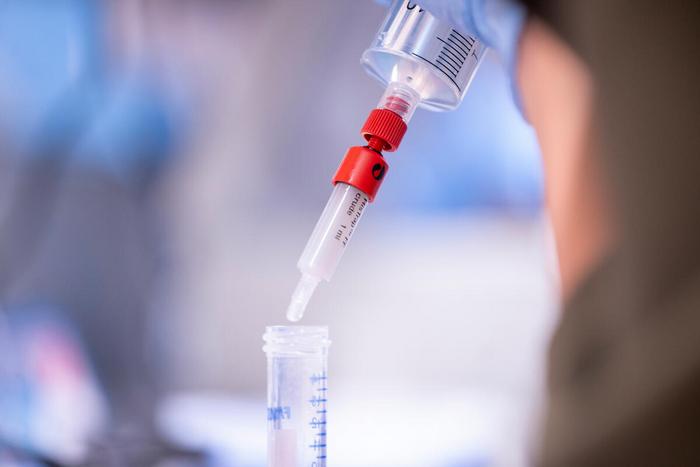Stem cell and bone marrow transplants (BMTs) provide the possibility of a cure for certain types of blood cancer, including many cases of leukemia and lymphoma. But for those transplants that require blood stem cells from a donor — known as allogeneic transplants — it can be hard to find an exact match. This is especially true for patients with certain genetic ancestries, especially African, Latin American, and Asian. Their tissues, or HLA types, are more diverse.

Credit: Memorial Sloan Kettering Cancer Center
Improving transplant success in patients without fully matched blood stem cell donors
Stem cell and bone marrow transplants (BMTs) provide the possibility of a cure for certain types of blood cancer, including many cases of leukemia and lymphoma. But for those transplants that require blood stem cells from a donor — known as allogeneic transplants — it can be hard to find an exact match. This is especially true for patients with certain genetic ancestries, especially African, Latin American, and Asian. Their tissues, or HLA types, are more diverse.
In a new retrospective study, MSK bone marrow transplant specialist and cellular therapist Brian Shaffer, MD, and a multicenter team of investigators demonstrated how to improve transplants in patients who are not able to find fully matched donors. The study was overseen and funded by the National Marrow Donor Program (NMDP). The research confirmed that for patients receiving only partially matched cells, giving chemotherapy shortly after the transplant greatly reduces the chances that the patient will develop graft-versus-host disease (GVHD), a potentially fatal side effect of BMTs that occurs when the donor’s immune system attacks the recipient’s healthy tissues.
The analysis included data from more than 10,000 BMT recipients, nearly half of whom received cyclophosphamide chemotherapy after their transplant. (The rest received anti-rejection drugs called calcineurin inhibitors, or CNIs.) Patients who received chemotherapy after their transplant had better outcomes than those who received CNIs. In fact, outcomes for patients with partially matched donors who received chemotherapy were almost as good as for those who had fully matched donors. An ongoing clinical trial at MSK is now looking at whether lower doses of chemotherapy are as effective as higher doses at preventing GVHD and whether they reduce the side effects of chemotherapy.
Read more in the Journal of Clinical Oncology.
Single Cell Analysis Sheds Light on Cell State Changes in Prostate Cancer
Cancer can resist treatment by changing its identity, a transformation known as lineage plasticity. A notable example is when prostate adenocarcinoma, the most common type, transforms into neuroendocrine prostate cancer (NEPC), a more aggressive form. It is important to understand how this plasticity affects the expression of cell surface antigens – especially because promising new drugs are being tested that target specific surface antigens. A team led by MSK physician-scientist Charles Sawyers, MD, and Michael Haffner, MD, PhD, of the Fred Hutchinson Cancer Center used immunohistochemistry and single-cell analysis of treatment-resistant prostate cancer and found a surprisingly high variety of cell states. This heterogeneity is not captured by conventional histology-based methods. They further showed that the cell states could be identified by gene regulatory networks that could improve diagnostic precision and help in the selection of patients who will respond to therapies aimed at specific cell surface antigens. Read more in the Proceedings of the National Academies of Sciences.



